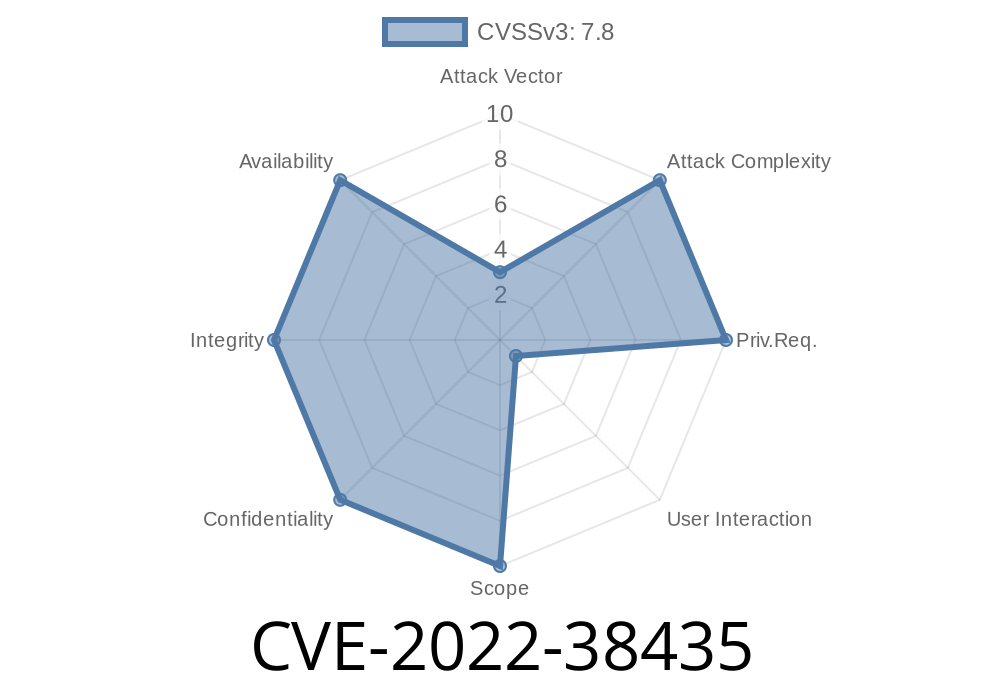A critical vulnerability, registered as CVE-2022-38435, has been discovered in Adobe Illustrator software. Specifically, this vulnerability affects Adobe Illustrator versions 26.4 (and earlier) as well as 25.4.7 (and earlier). The vulnerability arises due to an Improper Input Validation issue, which could lead to arbitrary code execution in the context of the current user. In order to exploit this vulnerability, an attacker would require user interaction, as the victim must open a malicious file.
Description
Adobe Illustrator, a popular vector graphics editor, suffers from a vulnerability that allows attackers to execute malicious code on the victim's system. This occurs due to poor input validation when opening specially crafted files. As a result, an attacker can craft a file that, when opened by the victim, triggers the vulnerability and leads to arbitrary code execution.
Exploit Details
Type: Improper Input Validation
Impact: Arbitrary Code Execution
CVSS v3.1 Score: 7.8 (High)
Attack Vector: Local
Attack Complexity: Low
Privileges Required: None
User Interaction: Required
Remediation: Upgrade to the latest version of Adobe Illustrator
Proof of Concept: (PoC)
Although the specifics of the vulnerability have not been made public to prevent widespread exploitation, a basic understanding of the PoC can be illustrated through the following code snippet:
# Pseudo code snippet to demonstrate a possible method of exploiting the vulnerability
def craft_malicious_file(filename):
with open(filename, 'wb') as f:
# Write malformed data that triggers the vulnerability
f.write(bad_data)
def main():
malicious_file = 'evil.ai'
craft_malicious_file(malicious_file)
# Instruct the victim to open the malicious file using Adobe Illustrator
print(f'Open {malicious_file} in Adobe Illustrator to exploit the vulnerability!')
if __name__ == '__main__':
main()
Note that this is a simplified representation of the possible PoC code to better understand the issue at hand.
Original References and Mitigation Steps
Adobe has recognized the vulnerability and urges users to update their software to the latest version to mitigate the risk. For more information, you can refer to the following resources:
1. Adobe Security Bulletin: APSB22-20
2. National Vulnerability Database (NVD): CVE-2022-38435
Conclusion
CVE-2022-38435 is a critical vulnerability in Adobe Illustrator that can result in arbitrary code execution if the software processes a maliciously crafted file. Users are highly recommended to update their Adobe Illustrator installations to the latest version and exercise caution when opening files from untrusted sources. By following the mitigation steps and staying informed about new security updates, users can significantly reduce their risk of falling prey to similar vulnerabilities in the future.
Timeline
Published on: 10/25/2022 17:15:00 UTC
Last modified on: 10/25/2022 17:37:00 UTC
